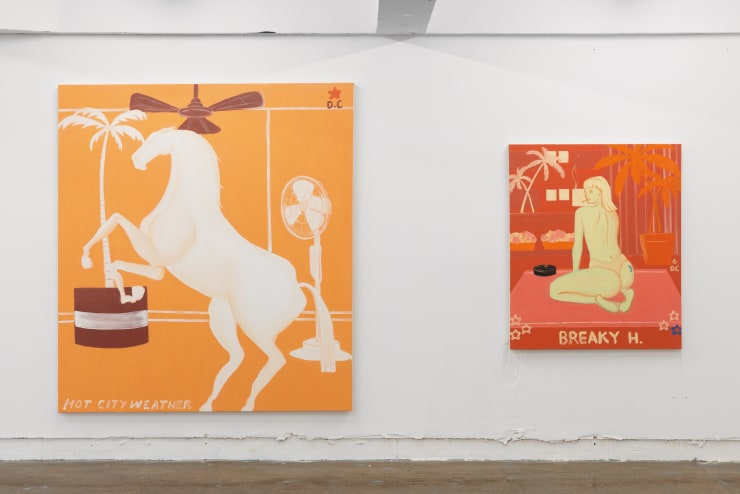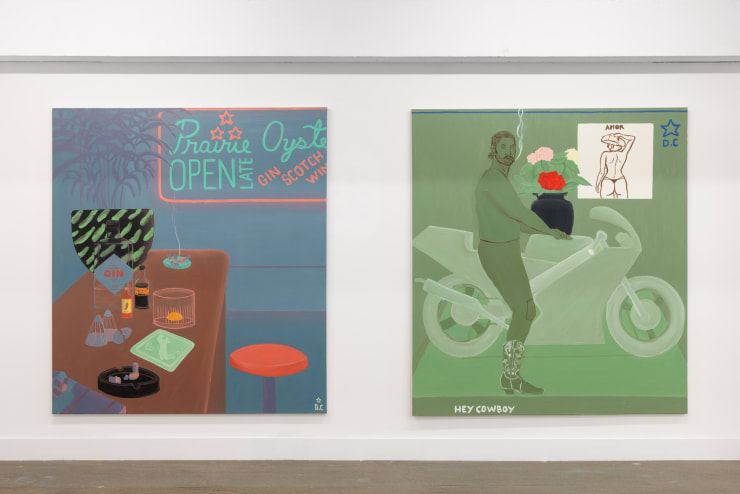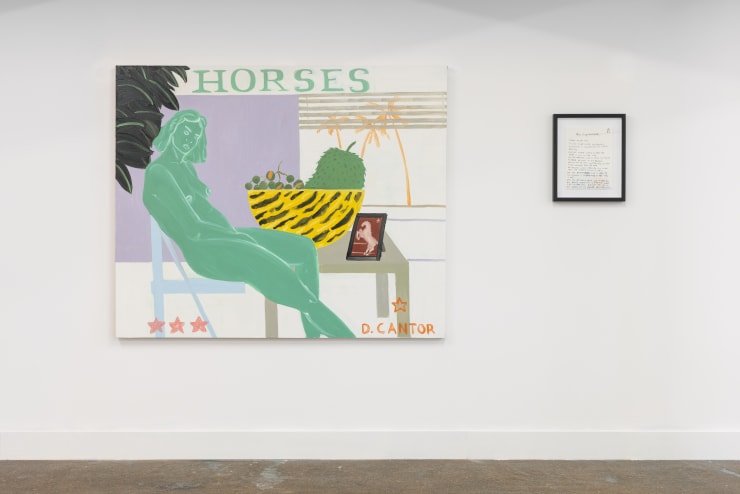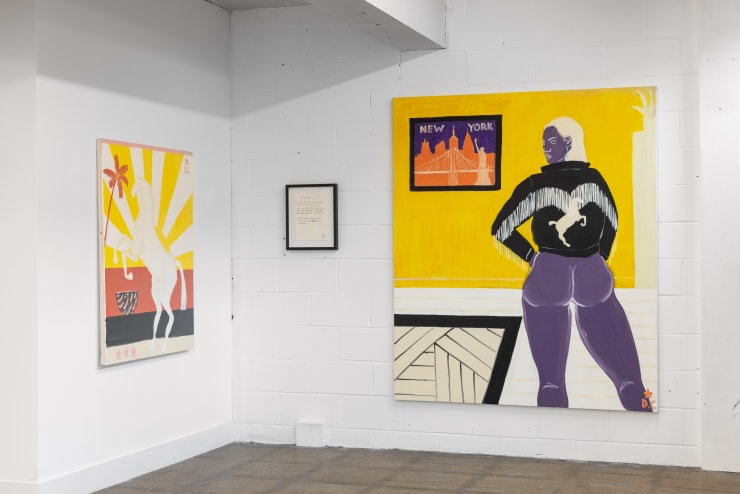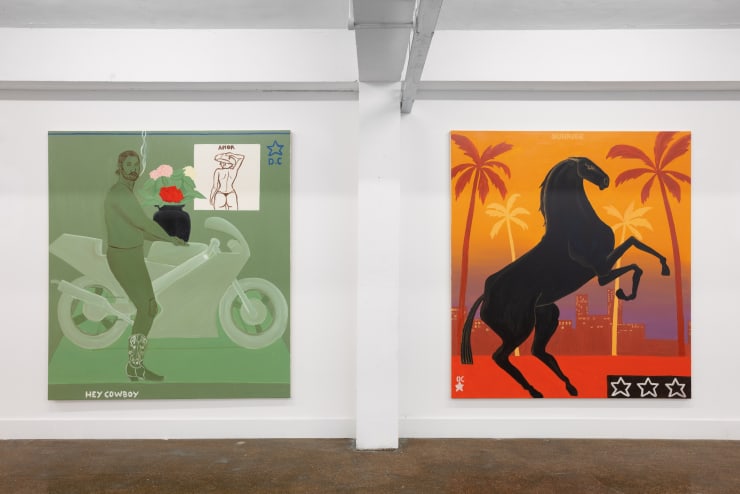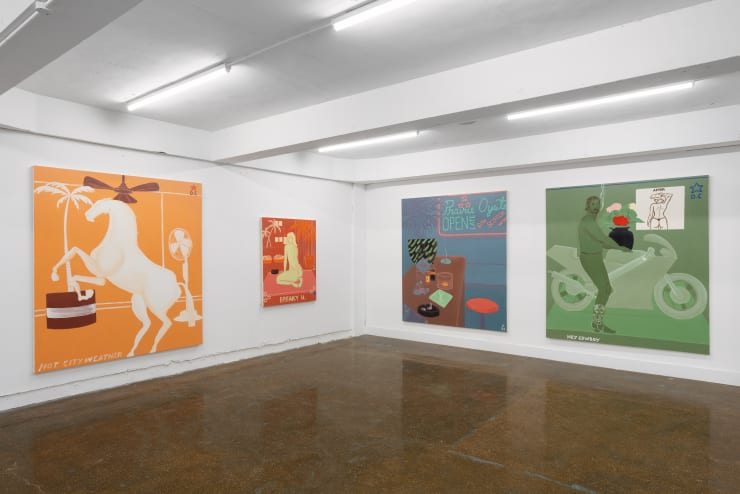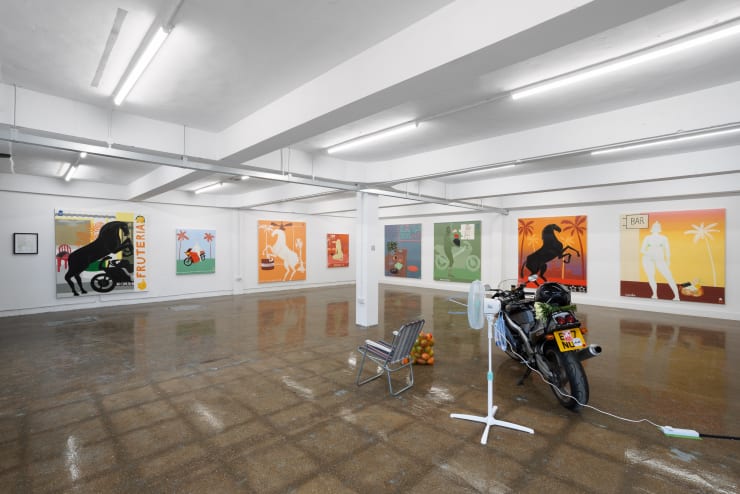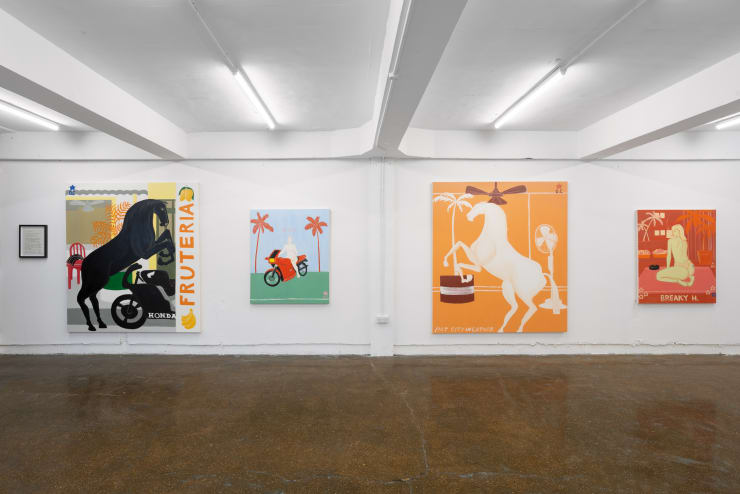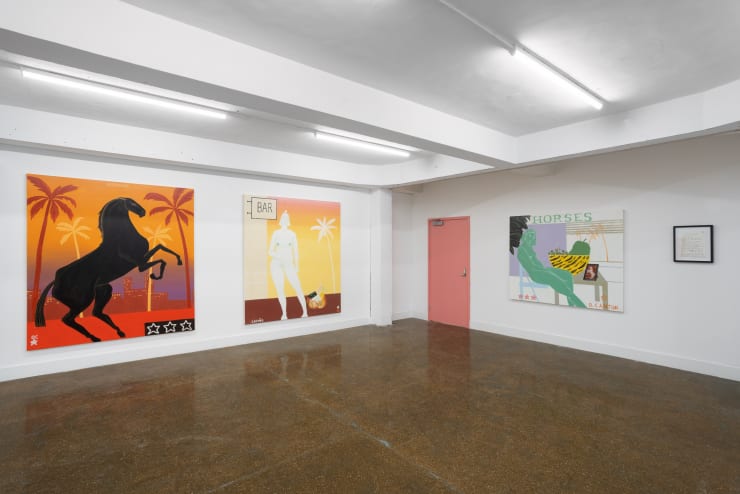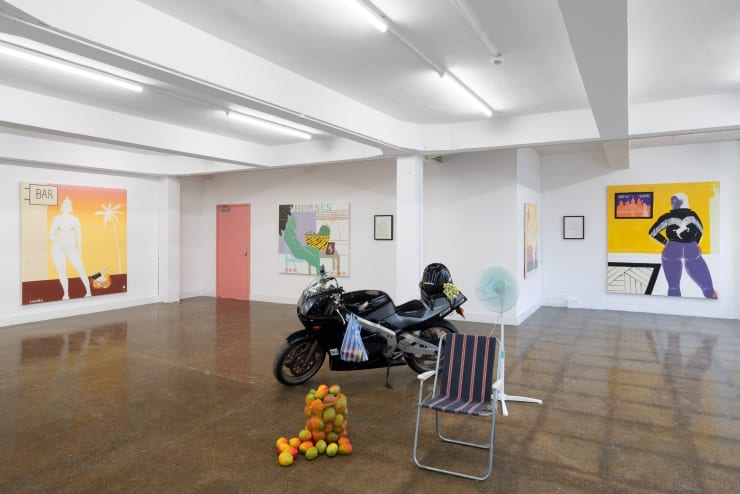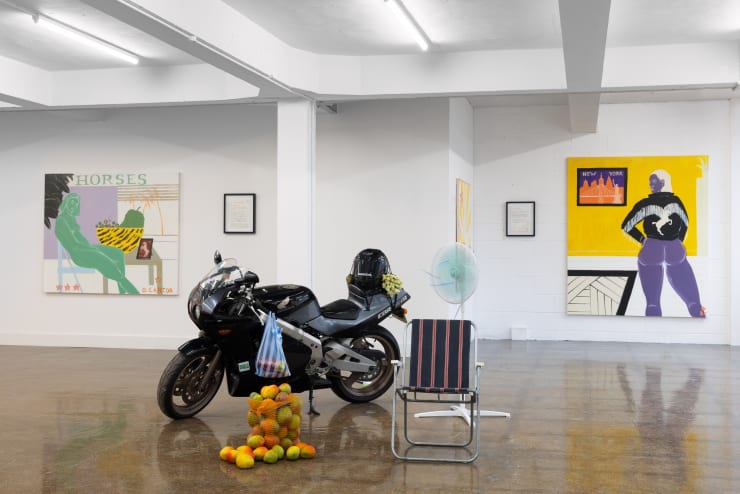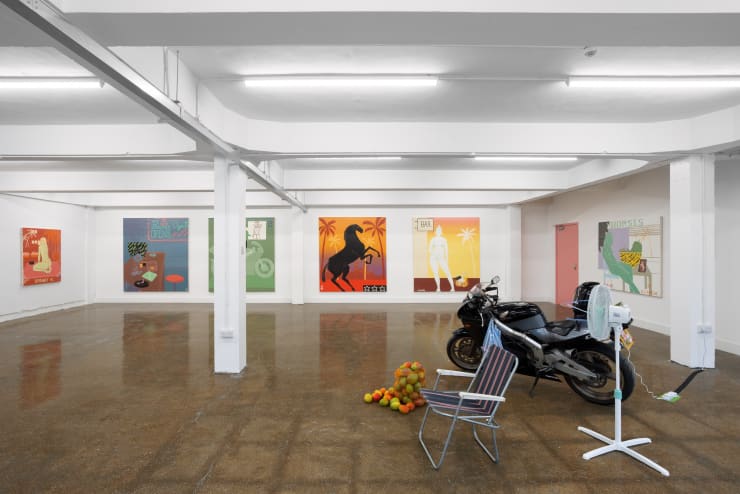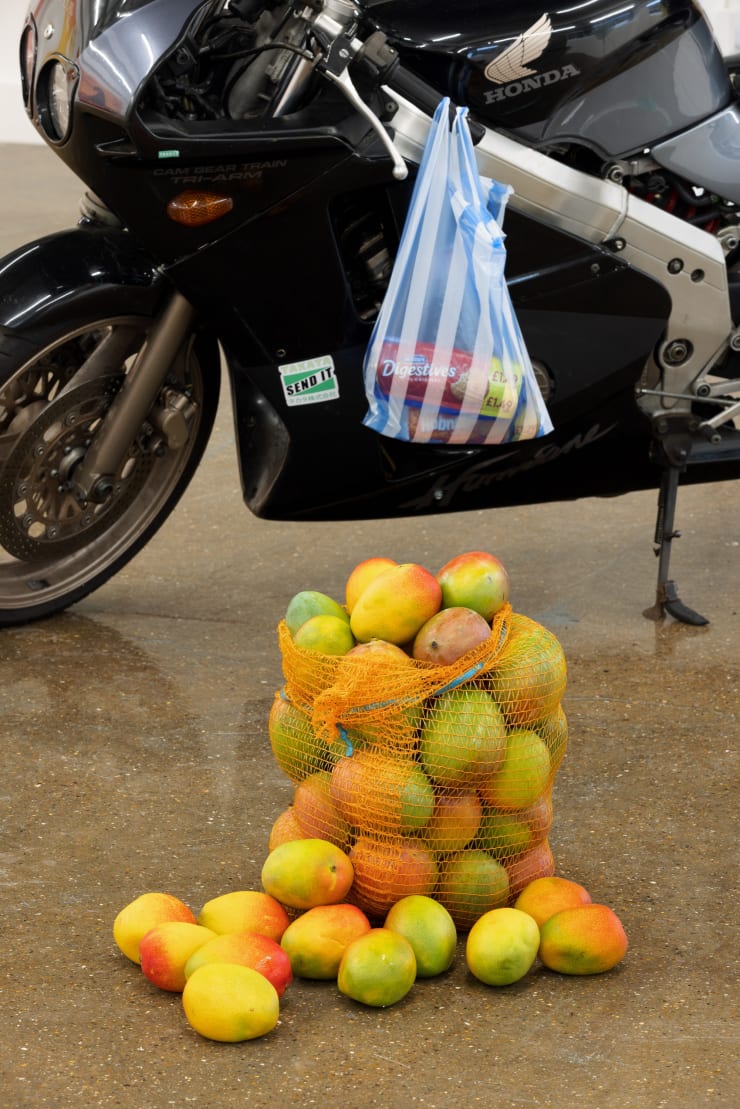Douglas Cantor : ALWAYS LATE TO THE PARTY
“It’s not that I'm not lucky, in fact, I'm the luckiest guy I know, it's just that the introductions had been made and the cocktails had been drunk by the time I arrived. Since I came to this town I’ve always been late to the party''.
‘ALWAYS LATE TO THE PARTY’ is the second solo exhibition by Douglas Cantor with Guts Gallery that presents a series of new large scale paintings and an installation.
Opening Night - Nov 18 6 - 9pm
General Opening Hours - 11am - 6pm
Address - Unit 14/15, Penarth Centre Ormside Street, London SE15 1TR
The latest works in this exhibition reveal Cantor’s experience of being an immigrant and how his culture has come to exist and be reshaped by moving away from his home in Colombia.
“I don’t make work about being an immigrant, I make work because I’m an immigrant.”
The paintings have elements that belong to Colombian culture, as versions of the real thing, having been filtered and transformed so no longer pure to what came before them. They are transformations of memories and experiences that have developed from no longer being in Colombia, at the source of their collective existence. They are what is being ‘carried’ forward. After being transformed from these experiences, some things prevail and some things are lost.
The installation in the gallery represents objects symbolic of daily life in Colombia, orange netted bags swollen with fruit and vegetables from the market, white roses that decorate churches and houses in remembrance of Saint Peter. At the centre is Cantor’s motorbike, which in Colombia is not viewed as a status symbol or capitalist toy, but used to get around and to load up your goods. The motorbike is a workhorse.
These iconographies are mirrored in Cantor’s paintings, predominantly in the title work of the exhibition, ‘Always Late to the Party’ which features Cantor, sitting proudly on his motorbike. Metaphorically, the ‘party’ is reflective of Cantor’s experiences living here in the UK as an immigrant, whilst the motorbike is the symbolic vehicle that carries us through the stories in Cantor’s paintings.
“It’s not that I'm not lucky, in fact, I'm the luckiest guy I know, it's just that the introductions had been made and the cocktails had been drunk by the time I arrived. Now everyone is outside having their fags and looking for the next place to go, while I’ve just gotten past the bouncer, and I’m now trying to work out where to order a whisky. Since I came to this town I’ve always been late to the party''.
Exhibition Text
Starting from behind, the feeling that comes with, for whatever reason, being removed from your familiar context to start a new life. Re-learning all the basic things that are taken for granted in our familiar surroundings, working out your way around things, your shortcuts, your interactions and the space you are entitled to, always being outside of the joke. These are all feelings too familiar to the immigrant.
Finding your own place in a place that doesn't want you to belong until you assimilate to their ways, - and not even then- , is an exercise that simultaneously strengthens, transforms and dilutes the character, identity and culture of the individual.
This set of circumstances creates a reality that in turn gives birth to a new definition of what it means to be from, or come from a place, which in turn evolves culture and redefines tradition through the hustle and the struggle of having measure up, levelling the playing field and being seen and acknowledged. Life as a diaspora.
While in the past Cantor's work has been made through the filter of nostalgia for a version of home he used to know, now his focus is on the present and the way he has been shaped by these experiences; what it means to not belong here or there, fragmented lives and the discrepancies between the different realities of here and there. Leaving people ‘behind’ and the responsibility to give back.
As a result, Cantor's current work and practice is not about being Colombian, nor about being from a place, standing for tradition or even nostalgia, instead, is about the shape his culture morphed into under these circumstances and the result that comes from the experience of migration.
The paintings reflect all this and work as a vehicle to both record as well as project the constant development of life, they remain romantic and idealised, wishful and hopeful. They preserve the dreamings of the immigrant in what may be a cultural version of the American dream, in this case his own.
On the surface, the paintings depict Cantor's immediate context, familiar imagery, personal objects, daily life, close relationships and personal desires. The canvases are inhabited by intimate images of the artist’s wife, portraits of close relationships, still moments experienced, personal belongings and the symbol of the horse which represents the artist himself.
Beneath this direct composition lies a much more personal, emotional and private aspect of Cantor's works, here the paintings exist as a means to deal with life, make sense of it and most importantly a way to confront and process his traumas, all told through less noticeable details as well as personal symbols that hold special meaning and relevance to the artist, an assortment of personal jokes that are even more so prevalent in the titles which are very carefully thought out, often coming from Cantor’s own writing.
Installation Text
‘Grandpa’s House’ (Casa de Los Itos)
The installation is an allegory to the surrounding of Cantor’s upbringings, a metaphorical recreation of his grandparents living room. Most of the objects in the installation belong to Cantor, drawing a parallel between cultural heritage and the transformation/dilution through the individual experience of migration (Diaspora).















